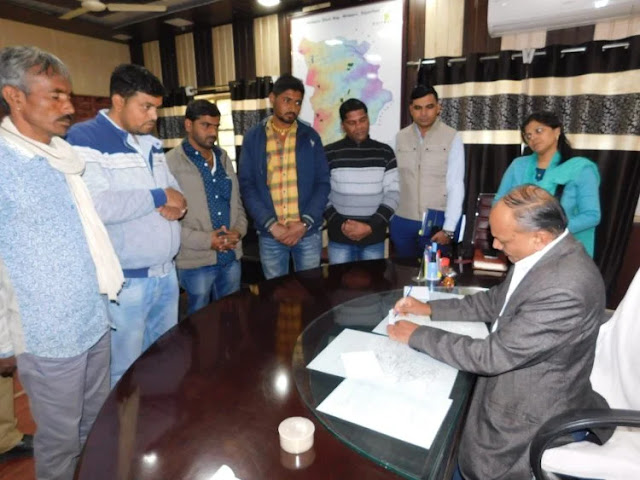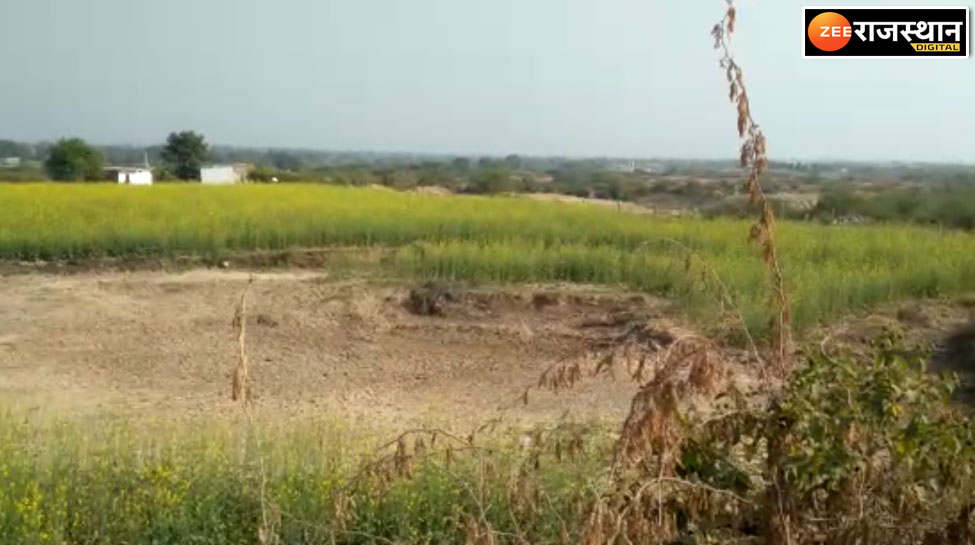More than 100 orans documented by a non-profit still listed as wastelands
By Shuchita Jha
Published: Monday 19 December 2022
 |
Animal husbandry has been the main source of income and medium of employment for most of the villagers in these oran areas for centuries, said the letter submitted by the villagers. Photo: iStock
|
Residents from around 40 villages of Jaisalmer, Rajasthan have walked 225 kilometres to protect community-conserved sacred spaces known as ‘orans’. Currently, the biodiversity hotspots are classified as wastelands.
The villagers walked to the district headquarters of Jaisalmer to submit a letter to the collector December 19, 2022. They asked them to recategorise the area as ‘oran land’. The current categorisation is causing a loss of biodiversity and is affecting the livelihood of the locals in the area, as huge chunks of land are being allotted for setting up solar plants.
The orans are among the last natural habitats of the great Indian bustard. The open stretch of land, which receives long hours of sunlight and brisk winds, has become a hub of green energy with windmills and solar photovoltaic dotting it.
“The orans are listed as ‘wastelands’ in the revenue records. The Degrai Oran is around 10,000 hectares (60,000 bighas), but only 4,000 hectares are recognised as oran, which are listed as common land. The rest is categorised as wasteland,” said Sumer Singh Bhati of Sanwata village in the Jaisalmer district.
The government is allotting these lands for solar projects to make them ‘useful’, according to Bhati. “There are other orans like Mokla, Salkha, Kemde, which also spread across several hectares but are listed as wastelands,” he added.
Rajasthan-based non-profit Ecology, Rural Development & Sustainability (ERDS) Foundation documented 100 orans and identified 30 more with the help from the Jaisalmer Chapter of the Indian National Trust for Art and Cultural Heritage (INTACH) last year, said Sumit Dookia, assistant professor at Delhi’s Indraprastha University and member of ERDS.
“All legal documents were procured from revenue records of Rajasthan and corroborated with locals to identify the land on sites. We observed that the orans have not been properly recorded, which is why these ‘oran lands’ or village common lands are given to the development projects,” said Dookia.
The foundation is working with locals, who have realised this injustice and are now raising their voices, he added.
A group of 20 people, including Bhati from Sanwata, Bhopal Singh Bhati from Jhaloda, Sujan Singh Bhati from Salkha, Kundan Singh Bhati from Mokla, Chatar Singh from Jam and Durg Singh Bhati from Satyaya have been walking from December 11.
The group began from Degrai Mata Mandir of the Rasla village, getting residents of different villages to sign the letter. Several people also joined them as they progressed.
“We have been preserving these grasslands covered with native biodiversity like ber, khejdi, kair, etc since generations. We have conserved these as we are barred from cutting and felling trees here. We have spiritual and religious connections to the orans,” the letter said.
These orans are hotspots of biodiversity with trees and flowers like rohida, bordi, kumbhat, and desi babool in large numbers, the letter added.
There are different varieties of grasses like sevan and murath as well, making these grasslands home to more than 250 species of birds and animals, including the great Indian bustard, McQueen bustard, chinkara, Indian desert cat, desert fox, etc, it said.
The villagers have raised this issue of conservation and correcting the land records to accommodate the orans, Bhati told Down To Earth. If corrected, local people can take their cattle to graze and depend on them for livelihood, but so far, no action has been taken.
“The Supreme Court in 2018 had ordered the orans be recorded as ‘deemed forests’ in the revenue records in the TN Godavarman vs. Union of India case, but not even one oran has been recorded as a deemed forest so far,” said Dookia.
“We have given several memorandums to the district administration in the past as well, but our requests seem to fall on deaf ears. But will continue fighting for our orans,” added Bhopal.
Most people in the Jaisalmer district are indirectly dependent on animal husbandry for employment, the letter said. Almost all the ancient orans of the district are located in the middle of livestock-dominated villages, where agriculture is prohibited due to ancient social and religious beliefs.
“Due to this, animal husbandry has been the main source of income and medium of employment for most of the villagers in these oran areas for centuries. And their pastures are located in these oran areas,” read the letter.
“In these, the herdsmen of the area have been grazing cows, sheep and goats for centuries, but for the last few years, there has been a crisis on the pastures due to allotment of these ancient traditional pastures to various energy companies,” it added.
The government has allotted vast chunks of lands under the orans to energy companies and it is creating pressure on the remaining grazing lands, the letter further stated. Many types of grass have started disappearing and the area’s natural biodiversity is being affected.
https://www.downtoearth.org.in/news/wildlife-biodiversity/jaisalmer-villagers-march-225-kilometres-to-get-sacred-groves-listed-as-oran-land--86653

















